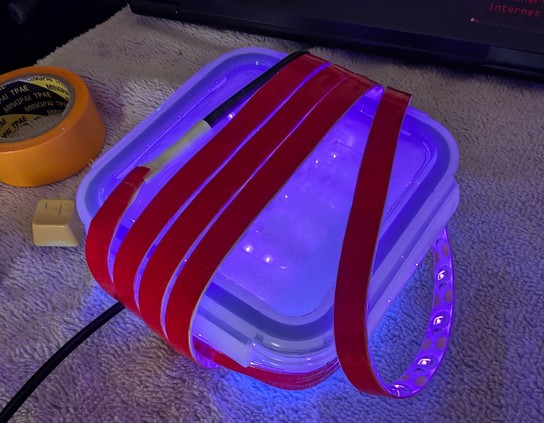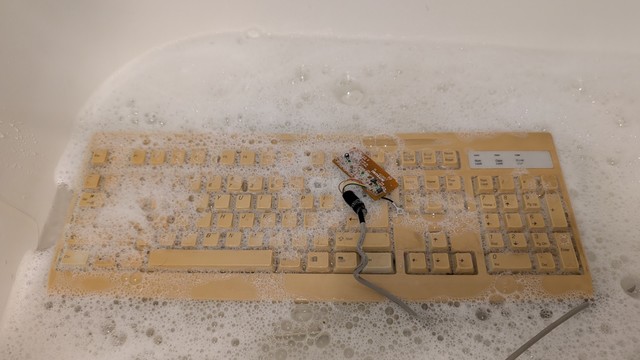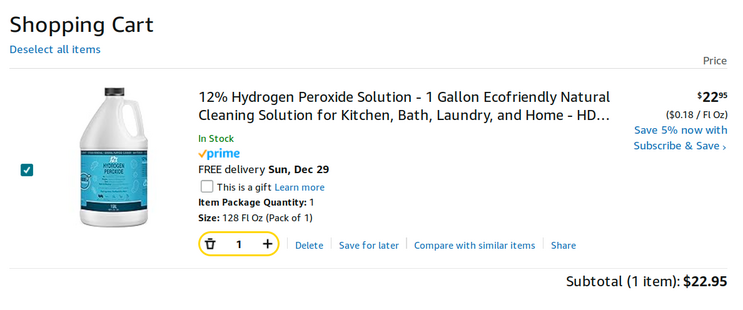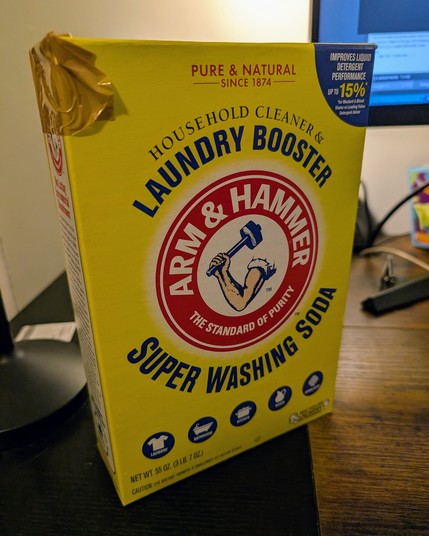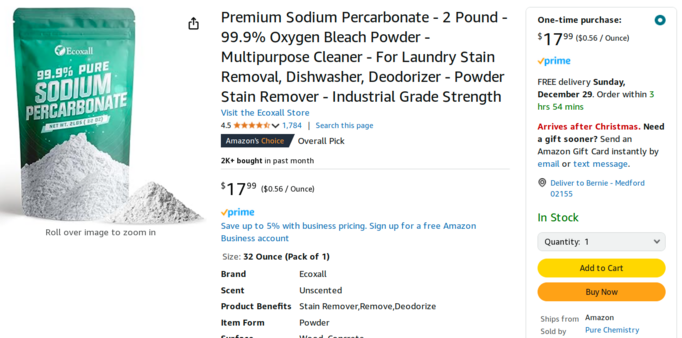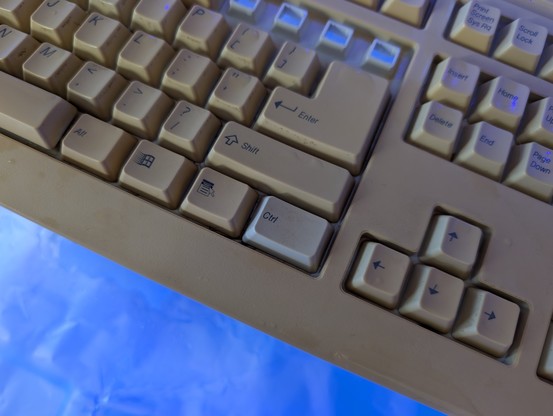Recent searches
Search options
After watching several videos on #retrobrighting techniques, I started a couple of small-scale experiments to see if my setup works.
This year's Christmas decorations will shine in UV light!
If you followed my A3000 restoration threads, you can easily guess which yellowed plastic I need to retrobright 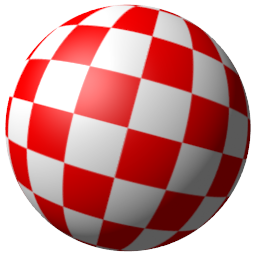
https://mstdn.io/@codewiz/113586277421694238
This cheap PC keyboard will go first to test the effectiveness of my #retrobrighting process.
The very first step consists in a bath in dish soap and hot water. This should prevent grease and other dirt from blocking the UV light and the ozone.
While I was at it, I also threw in the PCB, just to see if my soap is safe for electronics.
Then I rinsed everything with fresh water and wiped with 70% isopropyl, which didn't seem to disturb the key engravings.
Many #retrobrighting videos dip the plastic to be treated in concentrated hydrogen peroxide, or coat it with hair bleaching cream, which may contain other chemicals.
But 12% peroxide is kinda expensive, and I couldn't find any in nearby stores. The fastest delivery I could find wouldn't arrive in time for Santa to admire my first retrobrighted keyboard.
So I decided to try an alternative: sodium carbonate. Pure and natural since 1874... and dirt cheap at $0.10 per ounce!
I'm no chemist. Until yesterday, I didn't even realize that washing soda isn't the same of baking soda (sodium *BI*carbonate).
But I suspect what was actually needed was sodium *PER*carbonate!
https://en.wikipedia.org/wiki/Sodium_percarbonate
Wikipedia confirms that, in water, percarbonate decomposes into hydrogen peroxide. Which is why it works the same for #retrobrighting.
But I don't have any percarbonate at home, and it won't arrive before Dec 29 either.
Moreover, how much would I need to get the equivalent of 12% peroxide? Now I regret not paying enough attention in #chemistry classes!
Before realizing that sodium percarbonate was actually what I was supposed to use, I started a small AB-test in my UV chamber using plenty of sodium carbonate.
After spending about 12 hours dipped in the solution, the '+' key (treatment) is visibly less yellow than the '-' key (control).
Despite using the wrong #chemistry, my first #retrobrighting experiment didn't completely fail. Can anyone explain this surprising result?
I think you lose points for not using the Ctrl key as the Control.
@jamie The 8-bit guy made exactly the same joke a few years ago: for some reason, he couldn't use the Ctrl key as a control in his experiment comparing various #retrobrighting methods.
And I also couldn't, because both my Ctrl keys are visibly less yellowed than adjacent keys.
I've seen keyboards whose space bar is more yellowed than the rest, but that's the only key having no engraving so it's plausible that it went through a different process.
So, why Ctrl??
Maybe somebody lost control?



